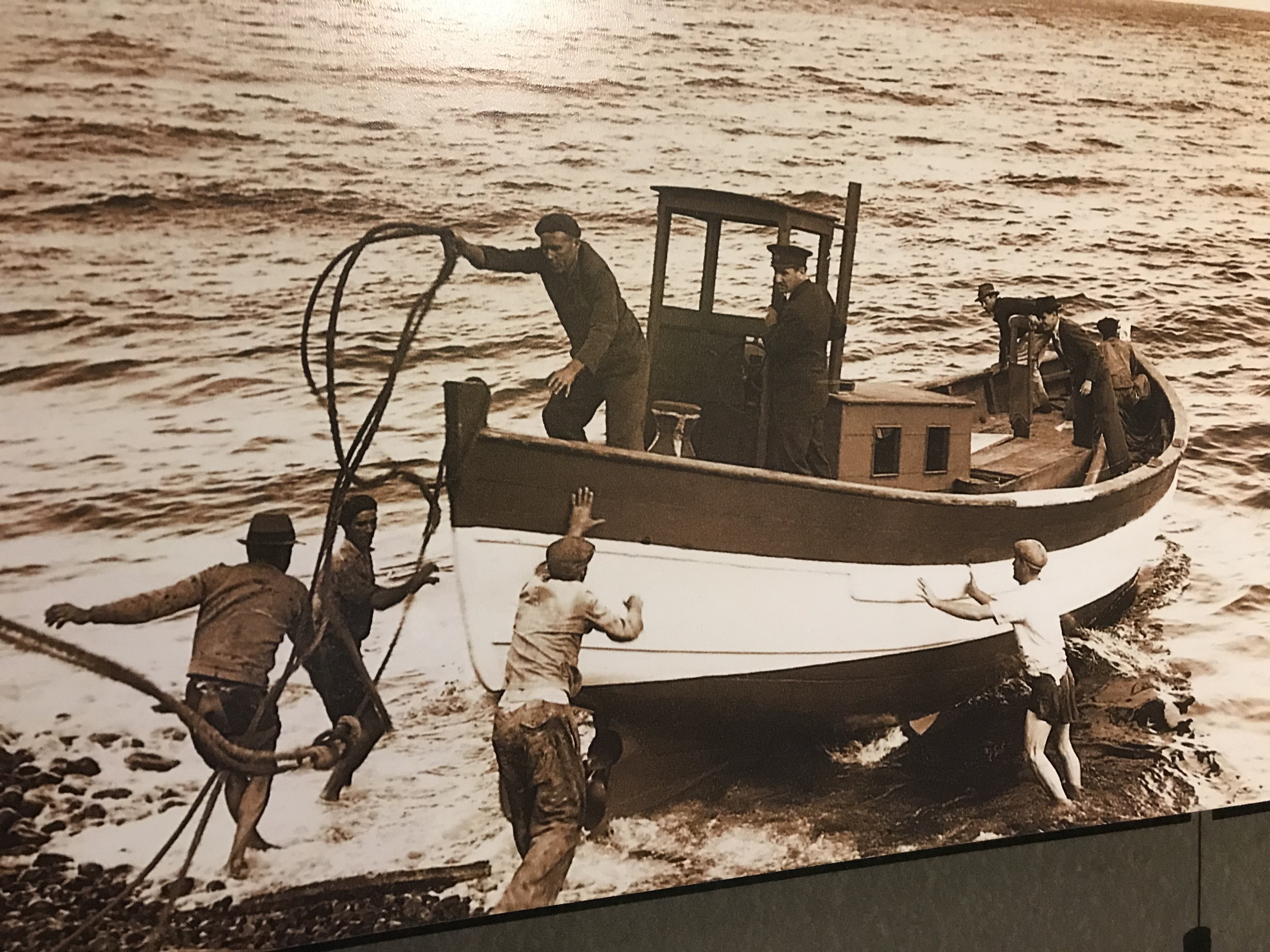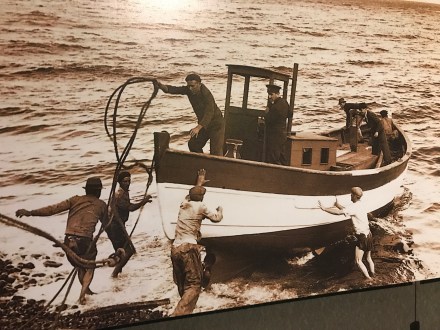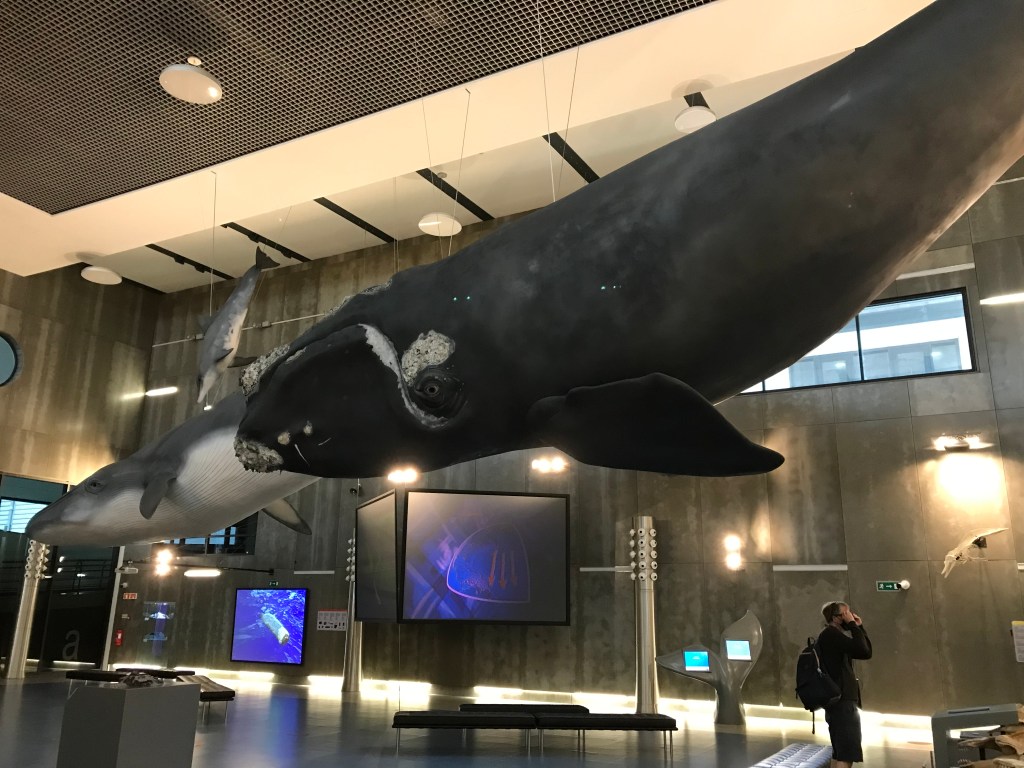Whaling in Caniçal
A short drive along the coast from Funchal is Caniçal, which used to be a whaling community but is now, according to the guidebook, at the forefront of whale conservation. We went to have a look.
The best place to start seemed to be Museu da Baleia, which looks like a huge warehouse. The museum had a strict covid protocol, and we were instructed to sanitise our hands, and show our covid certificates before we could enter. We were given headphones, charged 10 euros each, and sent off down a series of ramps to the lower level. The headset was very clever, with the commentary automatically changing as I wandered around, giving the correct information for the display I was standing next to. At one point we were given 3-d glasses, and watched a film about how whales evolved, the land mammals returning to the sea.
I was expecting the museum to be about whales, explaining their habitat, showing how they were protected, perhaps a model that I could stand next to and be amazed by their size. There were models hanging from the ceiling, but too far away to really appreciate their size. Mostly, the museum seemed to be about whaling.
There was a photo wall of whaler portraits. There were models showing the process of stripping the whales after they had been slaughtered, explaining what each component was used for. There was even a film, showing whalers in the 1950s, running to their boats, putting out to sea, harpooning whales. The emphasis seemed to be on the courage of the whalers, the dangers they faced, the difficulty of catching such a huge animal on small wooden boats. It was uncomfortable to watch, like watching a film of hunting elephants. It was also telling that the film was so dated. Nothing from the late 1970s (whaling stopped in 1981) when the boats were more sophisticated, when the whales had no chance of escape. If I had been a ten-year-old on a school trip, I would’ve been impressed by those early sailors, they would appear as brave heroes. Perhaps, at the time, they were.


I guess it’s difficult to know how to portray whaling in a community that until relatively recently has survived due to the practice. School children will know that their grandad was a whaler, the teachers probably grew up in the home of a whaler. I wonder whether my grandchildren will feel the same about me eating meat, and if they will wonder how and why I did such a thing. I wonder if my abhorrence of whaling is hypocritical.
We left, walking up a ramp with portraits of the whalers painted by school children in the style of famous artists. They were clever, the sort of work I would have been pleased to encourage when I was teaching. Though I still felt uneasy with the subject. Were the children honouring their past—and should they have been? But should the community cope with judgement and condemnation when at the time, it was seen as a way of life? I don’t know. But I had hoped to learn more about whales, to stand in awe at their size, to understand how they are faring in today’s world. I had hoped that killing these magnificent creatures would be seen as wrong. Perhaps I was in the wrong town for that to happen, perhaps we need to be further removed from the mistakes of the past before we can face them.

Thanks for reading. Take care.
Love, Anne x




Impressive and interesting write up for whale fans
LikeLike